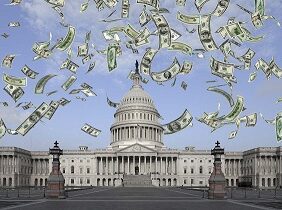Amid the swirl of election news, President Donald Trump’s move to greenlight logging in much of Alaska’s Tongass National Forest must not be overlooked. The “roadless rule” no longer protects nearly 9.2 million acres of Sitka spruce, cedar and hemlock — 55% of Tongass — from roadbuilding and timber harvesting. The rule must be reinstituted.
Administration officials moved hastily to kill the rule in late October, against the objections of Alaska tribes and 96% of public comments on the proposal. This punctuated a chaotic autumn for iconic Alaska places. Far west of Tongass, the Pebble Mine project, troubled but still alive, threatens to despoil Bristol Bay’s immense salmon fishery. To the north, Trump’s Interior Department is reported to be fast-tracking seismic testing in the Arctic National Wildlife Refuge, a precursor for oil drilling.
The threat to the Tongass, on Alaska’s south coast, carries heavy potential consequences. The Oregon climate-change organization Geos Institute found in 2019 that the old-growth rain forest is a significant bulwark against climate change. Acreage that can now be logged would place about 4 million tons of carbon emissions into the atmosphere annually, Geos scientist Dominick DellaSala said.
Logging Tongass isn’t worth this sacrifice. In the region, 26% of jobs come from fishing and tourism — which lose out if Tongass is extensively logged. Timber is 1%. And the subsidies that ensure timber harvesters turn profits have since 1980 cost taxpayers an average $44 million a year in the currently logged portion of Tongass, Taxpayers for Common Sense revealed in September.
All is not yet lost. U.S. Sen. Maria Cantwell, D-Wash., has repeatedly sponsored bills to strengthen the Roadless Rule. She said this week that Trump’s decision appears to have been made too hastily to meet process requirements, including consulting properly with tribes. If necessary, a court challenge must stop this assault.











Get Social